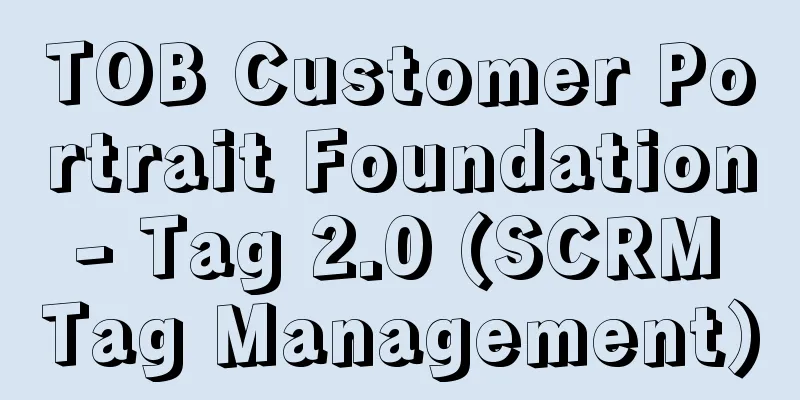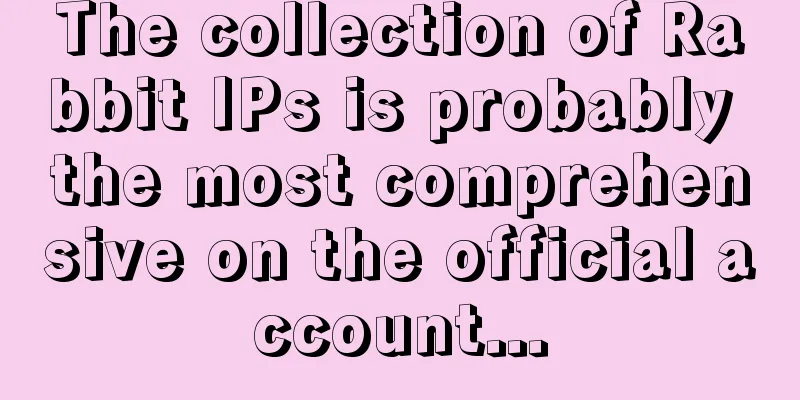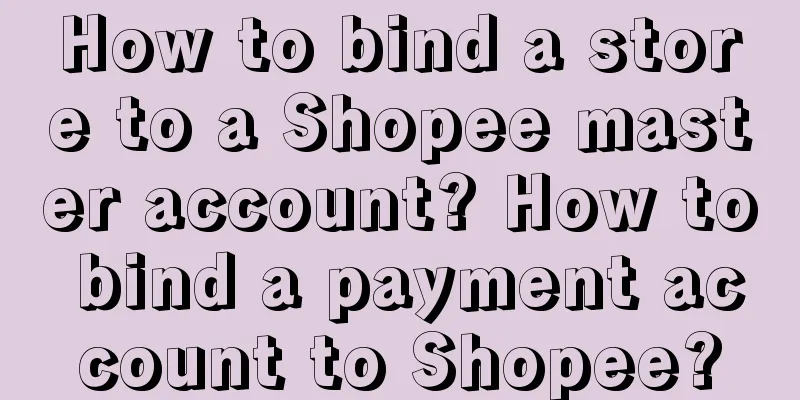TOB Customer Portrait Foundation - Tag 2.0 (SCRM Tag Management)

Abandon confused thinking and produce orderly content. The last time I talked about tags, I talked about the following:
other:
This time, let’s talk about some labels in scrm, mainly including channel labels (customer source channels, as long as the channel labels are scanned in, they can be automatically labeled), content labels (setting material labels, you can label after watching certain materials), and behavior labels (for example, participating in activities, forwarding articles, automatically labeled). Let’s talk about channel labels first. I divide channel labels into the following categories: 1. Channel-Activity: For a specific activity, you can analyze the activity publicity input; 2. Channel - Self-media: You don’t need to be specific about a certain article, just the general category of self-media will do, such as Zhihu, Toutiao, official accounts, etc. 3. Channel - Official website: The official website is the main channel for traffic, so official website detection is also very important. Many people in charge of SEM/SEO will analyze the source pages and suggest that companies select some important source pages and make them active separately, such as the actual traffic flow of a newly built landing page and the traffic flow of a key industry. If divided into more detailed categories, it can also be divided into the official website sidebar, banner, bottom, etc. 4. Channel-Poster: Marketing posters may involve a wide variety of content, such as sharing of practical white papers, introduction of functional points, holiday greetings, etc. 5. Channel-Others; Others are some miscellaneous content, including but not limited to ecological associations, email marketing, personal/departmental traffic, etc. It depends on the situation. For example, for this event, I want to divide it into very detailed categories, to know the traffic situation of some people, as well as the traffic situation of events jointly organized with ecological partners. It is set based on the necessary degree of analysis. Content tags are material tags. There is no need to divide them into very detailed categories. Our goal is to know what content customers are more interested in, so I divide them into the following categories: 1. Content-Industry: Industry classification that enterprises attach importance to. 2. Content-type; for example, this material is about function introduction, activities, interviews, cases, in-depth content, etc. 3. Content-others; for example, channel detection. If this article is placed in an email, I will mark it as email marketing. Another type is similar to behavioral labeling. For example, if a customer forwards an article, the system will detect it and automatically mark it as a forwarded article, etc. Behavior tags are both channel tags and content tags. It depends on the specific situation. Some customers may miss out on adding tags, so we will manually add tags after further understanding. Of course, I personally think that it is still necessary to control the number of tags. Many of them are the points of concern of content partners or event partners, but not the points of concern of operations personnel, so some tags do not need to be put. To give a simple example, such as event promotion, we may be very detailed when setting the event channel live code. What platform is the line in? This may be a point of concern for a certain partner in the team, but for operations personnel, they only need to know that he is here to participate in the event, so don't add the platform label when setting the live code. Specifically, the name of the channel active code is [xx activity-xxx platform], but the label in the channel active code needs to be [xx activity], and there is no need to set [xxx platform], because the operation partner does not need to know which specific ecological partner platform the call comes from. All customers who come in through all channels will be revisited uniformly. That’s the end of this article. The labeling is good and the customer management is great. I hope we can all go further and further on the road of customer operations! Public account: cici notes |
<<: To seize the opportunity of Xiaohongshu, you must seize the opportunity of store broadcasting
Recommend
How to promote Amazon as a new seller? Newbie Promotion Guide
Amazon is one of the world's largest e-commerc...
Why are there fewer and fewer advertising buzzwords nowadays?
Unlike in the past, emerging consumer brands can s...
What is the normal conversion rate of Amazon products? How to improve the conversion rate of Amazon products?
For every merchant, what they want to see most is ...
What are the advantages of Shopee's Thailand site? What issues should be paid attention to in operation?
There are many merchants opening stores on Shopee ...
The crossroads of the 100 billion short drama: iQiyi, Youku and Tencent Video face off against ByteDance
With the rise of short videos, the short drama mar...
Is Maomao Jie popular again? One person sells goods worth tens of millions, and 260,000 people are online within 10 minutes of the broadcast
On December 17, Maomaojie and her busy live broadc...
Super anchors go overseas, ice and fire
This article introduces the trends and challenges ...
Shoptop adds the "one-click store move" feature
Shoptop announced that in order to address the pai...
How can I open a store repeatedly? What are the consequences of opening a store repeatedly?
On Wish, a world-renowned e-commerce platform, som...
How to set up air shipping on Shopee? How to set up free shipping?
When opening a store on Shopee, merchants must set...
The long season, the fatal aesthetics of copywriting
This article deeply analyzes the high aesthetics a...
2024, the year when official V has the most sense of the Internet
Why are the official Vs the most popular in 2024? ...
Pharmacy Operation Trends and Growth
In this post-epidemic era, how to seize favorable ...
How do old products on Amazon take the place of new products? How does Amazon promote its products?
Merchants who run stores on Amazon must learn how ...
Daolang’s video live broadcast taught an important lesson to brand marketing
Daolang's video live broadcast was a hit on th...









